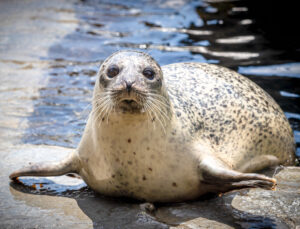Green Practices

We're going Green
Reducing Plastics
Plastics in the natural environment are extremely harmful to wildlife and humans. They clog our waterways, contaminate food chains, trap wild animals, and pollute the natural world. Every year, humans generate 300 million tons of plastic. At our current rate, there will be more plastic than fish in the ocean by 2050.
Here’s how Utah’s Hogle Zoo is fighting the plastic pollution crisis:
- For more than 20 years, the zoo does not use single-use plastic straws.
- Since 2017, we have worked with our retail partner to reduce single-use plastic packaging throughout our gift shops.
- Single-use plastic bags were discontinued from the zoo on Earth Day in 2018.
- In the summer of 2019, we hosted an awareness art exhibit titled ‘Washed Ashore’ by artist Angela Hazeltin Pozzi. This exhibit featured larger-than-life sculptures of marine animals, each of which was composed of plastics found across the beaches of Oregon.
- Following the exhibit, the Zoo eliminated single-use plastic bottles at our concessions and installed water bottle refill stations throughout our grounds in their stead.
Reducing single-use plastics is one easy thing we can all do to protect our environments and the wildlife. If you would like to learn more about how you can reduce your plastic use, check out the resource below.
Green Building Practices
The Leadership in Energy and Environmental Design, or LEED Green Building Rating System®, is the national benchmark for the design, construction, and operation of high-performance green buildings. It emphasizes sustainability in sites, water efficiency, energy & atmosphere, materials & resources, indoor environmental quality, and innovation & design processes. Utah’s Hogle Zoo has two LEED Gold Certified buildings: the L.S. Skaggs Animal Health Center and our administration building, the Conservation Resource Center, with more to come.
Many of the green guidelines laid out in the LEED certification are also applied to other capital projects at the zoo. Every effort is made to ensure that new exhibits are built in the most sustainable way possible.
Water Conservation
In 2002, Utah’s Hogle Zoo was one of the highest water users in the state. When we received this alarming news, changes had to be made to bring water use in-line with our mission. Since then, we have successfully reduced our water use by 65% over the last 20 years:
- Replaced large grassy areas with low-water alternatives.
- Installed advanced drip irrigation systems to regulate plant watering.
- Eliminated most dump and fill ponds in animal exhibits.
- Implemented advanced filtration systems that recycle 100% of water in the two largest Rocky Shores water exhibits, which house our polar bears (135,000 gallons) and seals/sea lions (165,000 gallons).
- Adjusted animal exhibit substrate to allow for hose-free cleaning.
- Introduced low-flow water fixtures in all guest restrooms.
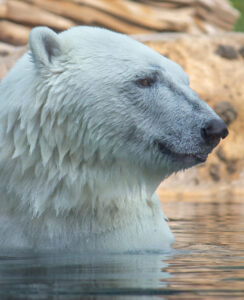
Electric Vehicles
In 2017, Utah’s Hogle Zoo and Utah Clean Energy, a non-profit, public interest organization working for a clean energy future, partnered to create the ZOOm Go Electric! program. Sixty-six electric vehicles and e-bikes were purchased through this six-week program. These electric vehicles prevent 64,000 gallons of gasoline from being burned. This is an important step towards maintaining clean air along the Wasatch Front. Electric car charging stations can also be found in all zoo parking lots for guest and staff use.
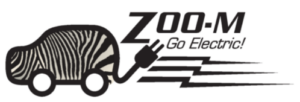
Recycling
Recycling can help protect our land, air, and wildlife. Landfills take up space and produce large amounts of greenhouse gases. Through proper recycling, we can divert items away from landfills. Recycling can also preserve natural habitats by reducing the need for new raw materials. It also reduces the water and energy that is normally needed to obtain those materials.
Utah’s Hogle Zoo has a robust recycling program that goes beyond what you have in your home. We recycle more than ten different kinds of waste:
- Twine
- Batteries
- Styrofoam
- Packing peanuts
- Scrap metal
- Film plastics (like bubble wrap and plastic bags)
- Cardboard
- Batteries
- CDs and DVDs
- Ink and toner cartridges
- Electronic waste
- CFL lightbulbs
- Singe stream recycling (paper, plastics, and cans)
Cell Phone Recycling & Gorillas
Cellphones and other electronic devices like smart watches, tablets, etc. contain a mineral called coltan. Coltan is a metallic ore that is mined like gold. One of the largest reserves of coltan is located in the Democratic Republic of the Congo— right in the heart of gorilla habitats. Mining for coltan in this region has contributed to the endangered status of the Grauer’s gorilla through habitat destruction and illegal poaching.
By recycling your old cellphones at Utah’s Hogle Zoo, you help to conserve an endangered species. Simply bring your unwanted phones and accessories to the Guest Services Office in the Entry Plaza. We will recycle these items through our partner Eco-Cell. Revenue generated through this recycling program is donated to our conservation partner Gorilla Rehabilitation and Conservation Education Center (GRACE) to support their work as they rehabilitate and conserve gorillas in the Congo.
Before you recycle your cell phone:
- Transfer all data and carrier information to another device.
- Clear all data and factory reset the phone or device.
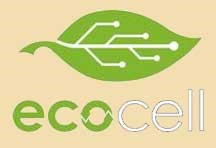
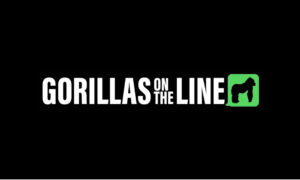
Seafood Watch
Healthy ocean ecosystems are essential to support both humans and the wildlife. Unsustainable fishing practices are destroying habitats, decimating fisheries, and killing millions of marine animals every year.
Utah’s Hogle Zoo is proud to partner with Monterey Bay Aquarium Seafood Watch to ensure that the seafood we purchase for both animals and humans is sourced sustainably. Visit seafoodwatch.org and their consumer guide for more information.

